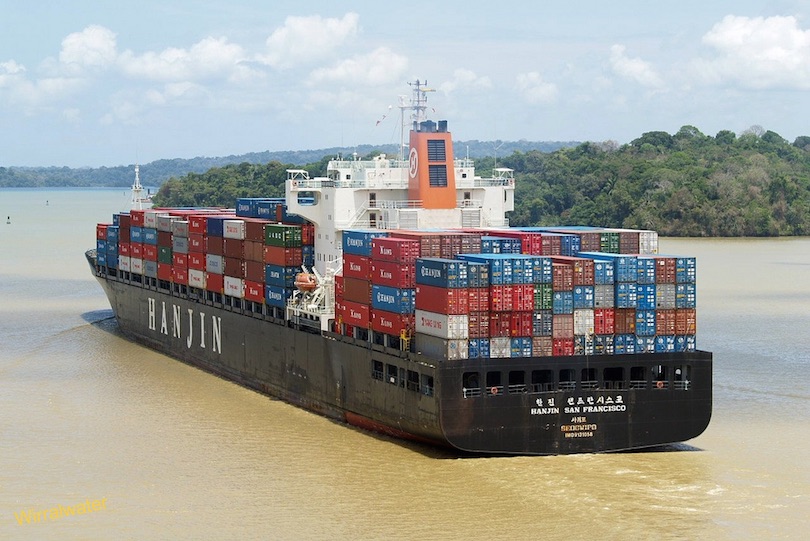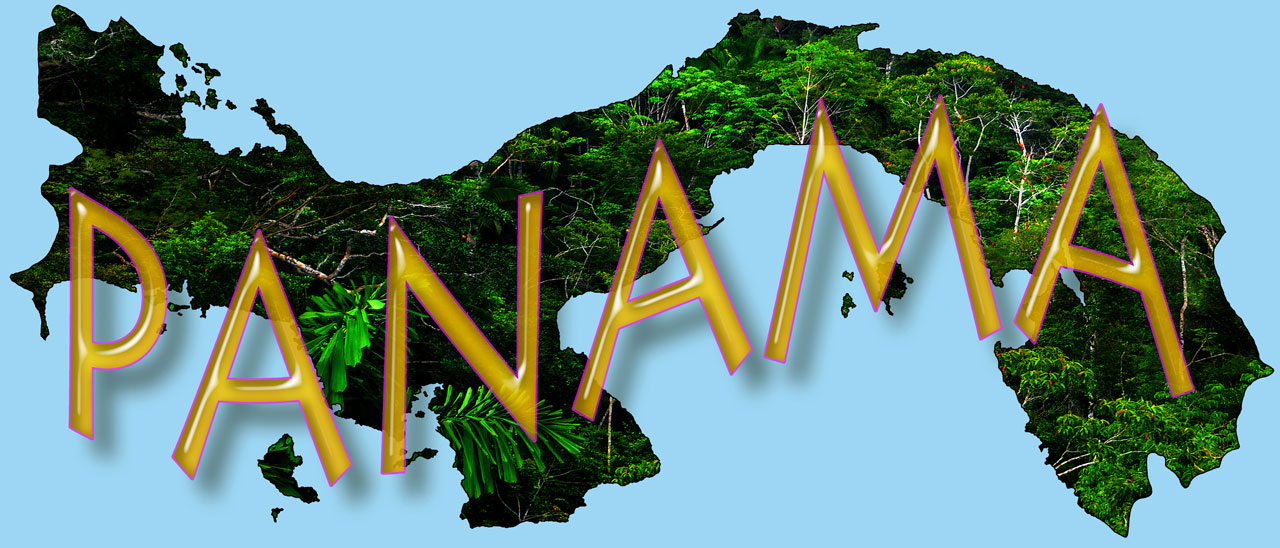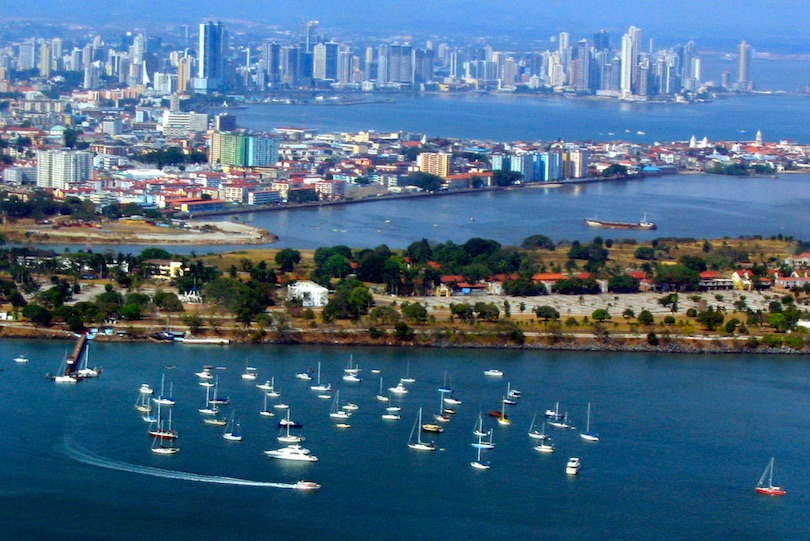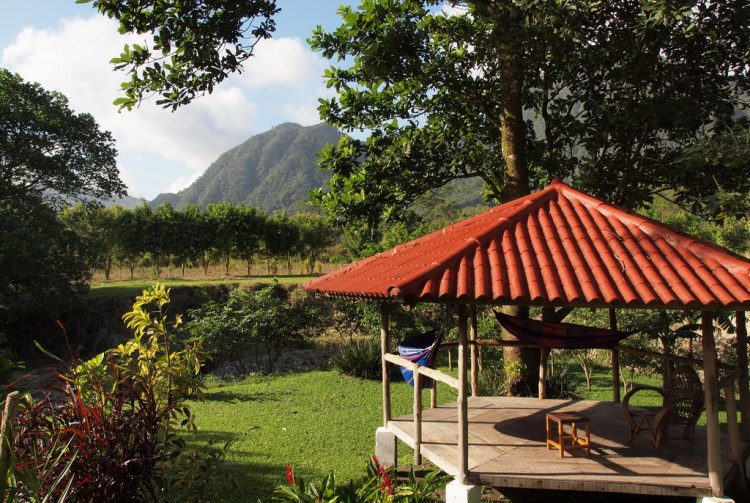3. Pearl Islands
Panama’s Pearl Islands are a cluster of islands in the Pacific that featured heavily during three seasons of the reality TV show Survivor. Some of the most beautiful islands in the world, they’re characterized by forested islands and pearl-white sandy beaches. While the majority of the islands’ beauty lies in their isolation, Contadora Island is the most developed and boasts two luxury tourist resorts.
Once home to native Indians until the 16th-century, the Pearl Islands were then taken over by the Spanish, who came in search of pearls, the island’s sought-after namesake. The pearl industry was prominent here, and they were counted, registered, and shipped from Contadora Island (which means ‘Counting Island’). Most of the activity surrounds relaxation: sunbathe on one of the many superb beaches, fish, and whale watch, or explore the old shipwreck that lies rusting away on the far side of Playa Larga, Contadora Island’s biggest beach.
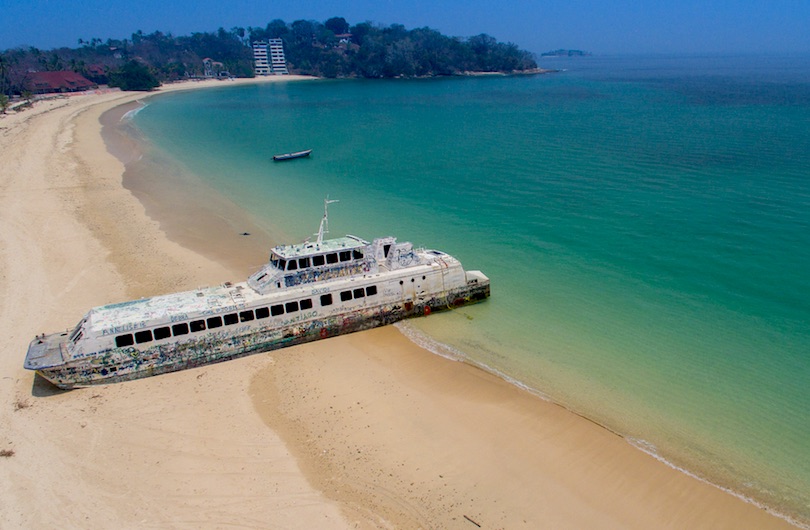
4. Volcan Baru
Volcan Baru is the highest peak in Panama, offering some of the most amazing views over Costa Rica and the Pacific and Atlantic oceans. Located in the Chiriqui Province of the Pacific West, the mountain is best reached at dawn, when you can witness an enchanting sunrise from the top. There are two ways you can ensure you reach the top in time: either you can start the hike around midnight and hike back later in the day, or you can hike up the day before and camp at Fogones campground near the summit.
There are two routes to choose from. The Boquete route is the easiest (yet still very challenging) and takes five to eight hours to ascend and three to five hours to descend. Many people prefer to take the Boquete route up and the Volcan route down, which is steeper and much more scenic. As you’ll climb a total of 3,474 meters above sea level, make sure you allow enough time to acclimatize, as mild altitude sickness is a risk.
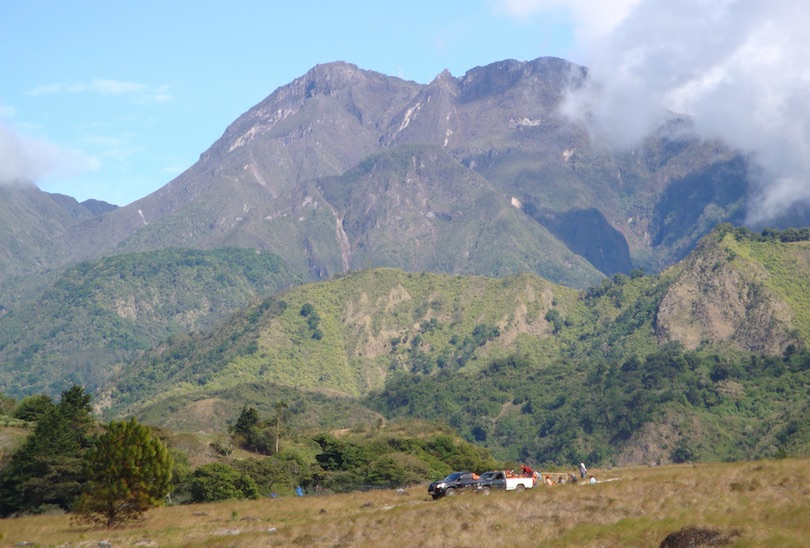
5. Gulf of Chiriqui
The Gulf of Chiriquí stretches along the Pacific coastline between Costa Rica and the Azuero Peninsula. It’s made up of countless scenic marine islands and beaches topped with forests and coco palms, including two national parks – Golfo de Chiriquí National Park and Coiba National Park, which is also the largest island in Panama.
Established in 1994, this marine park protects thousands of hectares of coral reefs, some of the richest mangrove forests in Central America, and some glorious coastal meadows. The most touristy offerings can be found on the islands of Cala Mia Island Resort, Isla Palenque, and Isla Secas.
Coiba National Park is a popular spot for humpback whale watching between May and November, and Galapagos seals can sometimes be seen on the far-away island of Montuosa. For those who prefer to just hang out and soak up the island life, sunbathing on one of the amazing beaches is encouraged, while those in search of a little more activity can find it surfing, scuba diving, or sport fishing.
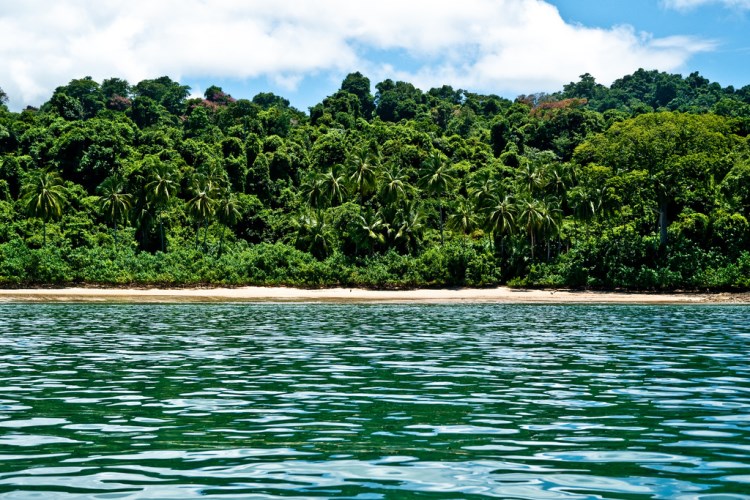
6. Boquete
Located in the Chiriqui province in the Pacific West, Boquete village is a great place to enjoy a little R&R. Enjoy plenty of fresh mountain air while surrounded by a patchwork of beautiful coffee plantations. Home to a surprising number of North American expats, this small-town mountain village has become a destination for health tourism, with a number of luxury spas and hotels.
For those in search of adrenalin, Boquete has a focus on the outdoors, with a pleasant temperature in the low 70s all year round – something that’s given it its nickname ‘The Land of Eternal Springtime.’ It’s also dubbed ‘the Valley of the Flowers’ and offers a lesser-known alternative to Costa Rica’s tourism draws. You can be as adventurous as you dare here. Go zip-lining through the rainforest, white water rafting, hike the Baru volcano, or trek in search of howler monkeys and resplendent quetzal. Or simply take your time exploring the region’s picturesque coffee plantations sipping on some of the world’s best brews.
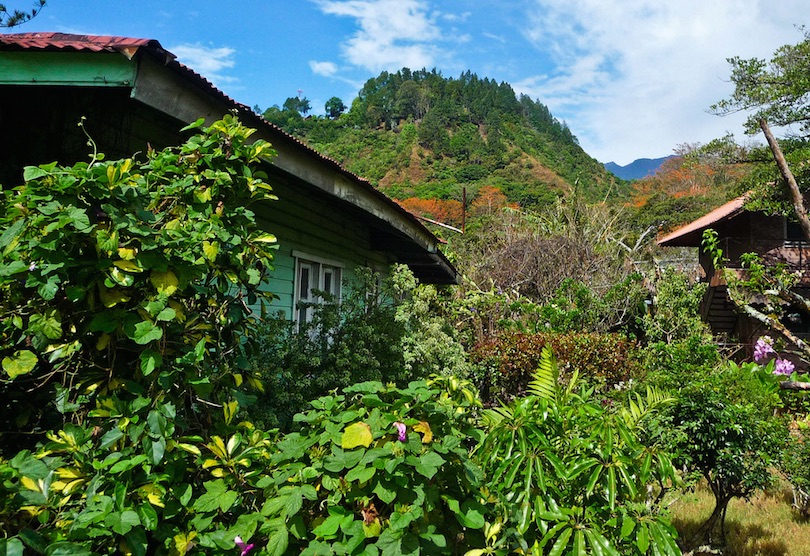
7. Santa Catalina
It may just be a quiet fishing village off Panama’s Pacific coast, but Santa Catalina is one of the country’s top tourist destinations. In fact, it is the village’s remoteness and unspoiled authenticity that appeals to most travelers. Adding to that, Santa Catalina is a popular surfing and diving spot with fantastic beaches as well as a frequent gateway to the Coiba National Marine Park.
Santa Catalina is small enough that it can be explored completely by walking. Tourists will not find any major landmarks, man-made attractions or shopping malls in this quaint village, but what they will discover are friendly people, a laid-back atmosphere and sandy beaches offering swimming, snorkeling, diving, and sport fishing. With some of the best and most regular surf breaks in all of Central America, Santa Catalina is also a surfer’s dream. The idyllic landscapes surrounding the village present horseback riding and birdwatching opportunities.
As Santa Catalina can only be reached by a single yet windy paved road from Sona, it’s advised that you travel during daylight hours as cattle can cause sudden dangerous roadblocks.
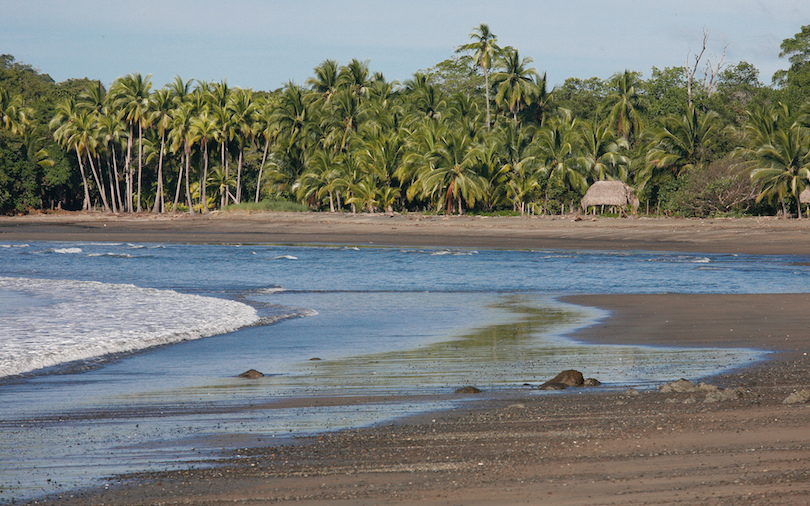
8. San Blas Islands
The San Blas Islands are a collection of islands off the Caribbean coast. They’re self-governed by the indigenous Kuna Yala tribe, who speak Tulekaya – their own language. A popular backpacker destination on the route between Colombia and Panama, the islands are slowly becoming more touristy. Yet even today, you can witness everyday life in an indigenous community where electricity isn’t always a given and ATMs are non-existent. Visitors are advised to bring plenty of cash for their visit.
Time spent on the San Blas Islands consists of sunbathing on the pristine, palm-lined beaches as well as swimming, snorkeling and diving among hundreds of tropical fish species. Hiking trails amid lush vegetation offer views of colorful birds and calls of howler monkeys. Visiting the Kuna Yala Indians is a good way to learn about their language, traditions, music and distinctive dress. The tribe members often host festivals and dances as well as sell handicrafts, which make good souvenirs.
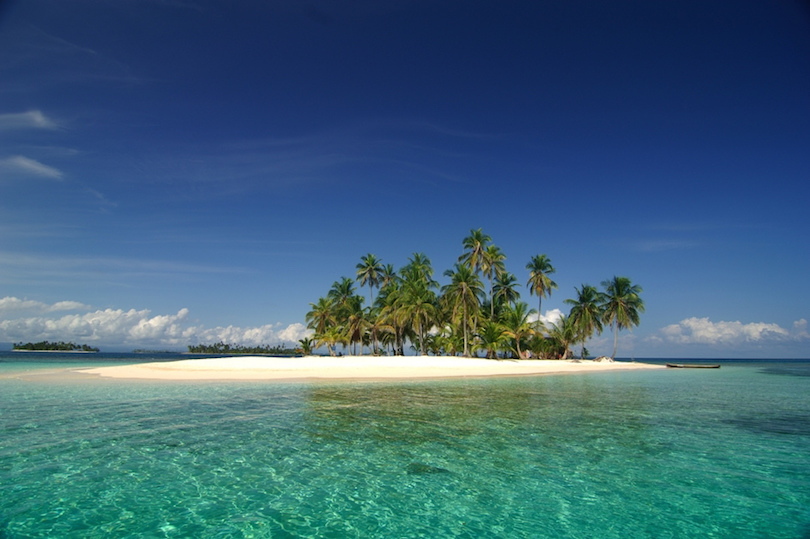
9. Bocas del Toro
The Bocas del Toro Archipelago is a cluster of islands, islets, and cays between Almirante Bay and Chiriqui Lagoon in the Caribbean Sea. Located in the north-western region of Panama, the island group is part of the district and province of Bocas del Toro, and is also home to a significant city of the same name.
Visitors can explore the islands easily via water taxis and private boats, while Isla Colon is also accessible via ferry and plane with an international airport. A magical wonderland of wild jungle, national parks, and biodiverse habitats for a plethora of birds and marine turtles, a href=”https://www.touropia.com/best-places-to-stay-in-bocas-del-toro/” target=”_blank”>Bocas del Toro is home to fascinating fauna and flora – some of which can only be found here. Endangered species include painted rabbits, green iguanas, and howler monkeys.
Like the rest of the Caribbean, with gorgeous beaches and beautiful blue waters, diving and snorkeling are popular activities. The province’s capital city, Bocas del Toro, is a melting pot of ethnicities – from Western Caribe to Latino’s and extraneros – with plenty of food and traditions aligned with each. Plus, while most of the islands are focused around chilling out, Bocas Town has a surprisingly good nightlife scene when the sun goes down.
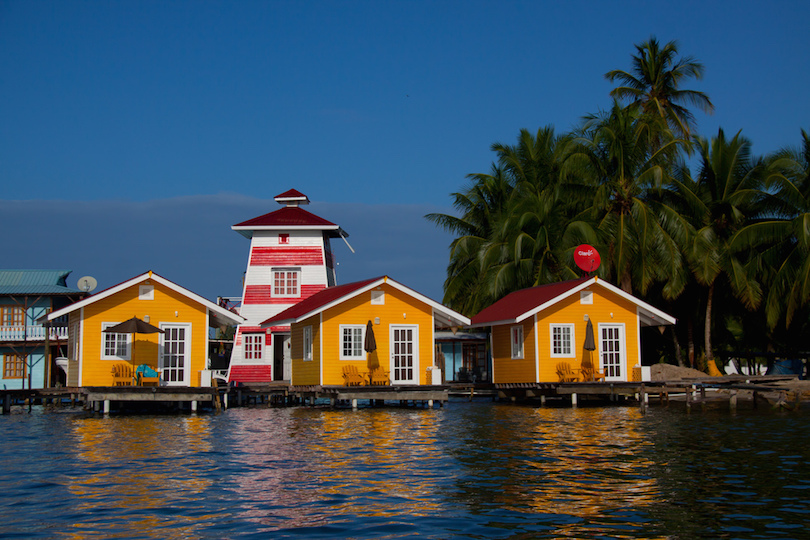
10. Panama Canal
The Panama Canal is one of the most famous landmarks in Panama – and indeed, all of Central America. Running between Panama City on the Pacific side and Colon on the Atlantic side, the waterway provides a shortcut between two oceans, and one of the world’s most popular shipping zones. It was initially constructed by the French in the late 19th-century; however, the project was deserted in 1893 after thousands of workers fell ill and died from malaria, yellow fever, and other diseases.
A decade later, the United States took over, with much more powerful machinery. They were able to complete this massive feat of engineering in 1914. A total of three major locks give access to the canal system and are the best places to witness the mechanics of the canal in action, particularly from the Miraflores Visitor Center, just a short drive outside of the capital. It takes eight minutes to fill or release the water in each lock and raise or lower the ship to the next water level, where it passes through the next lock. All in all, it takes just ten hours in total for a ship to travel from one ocean to another.
